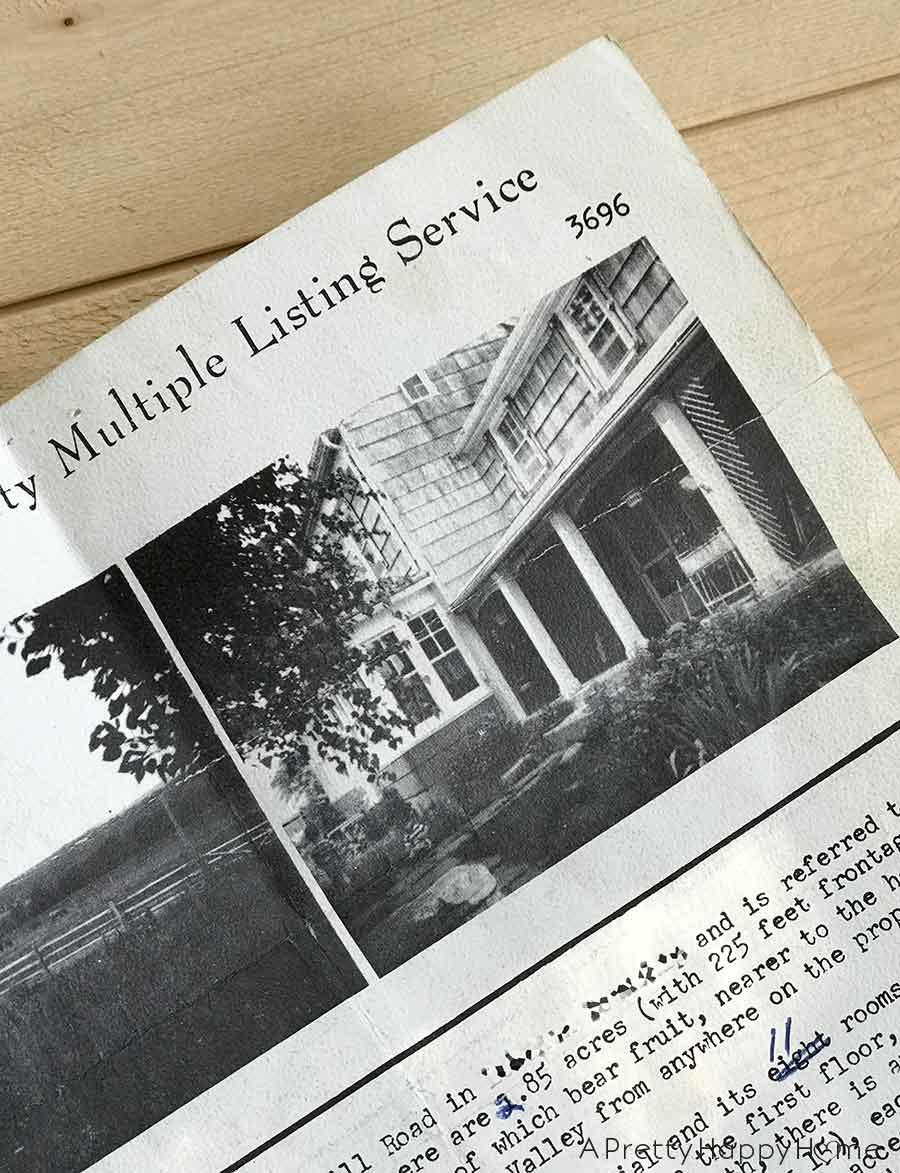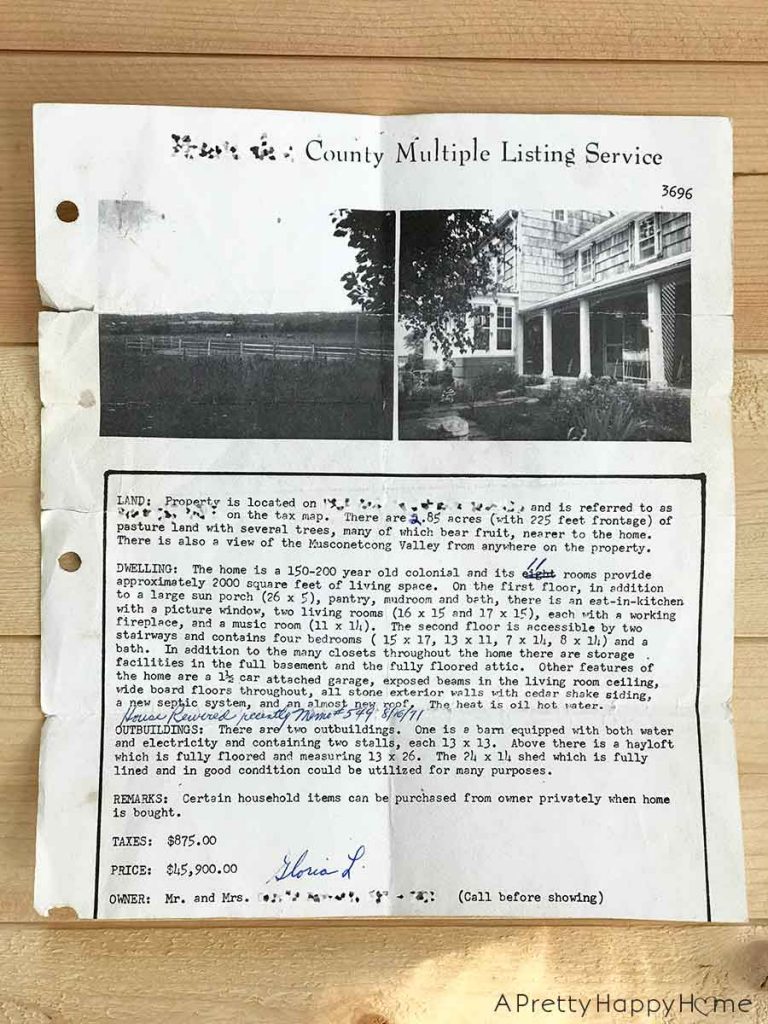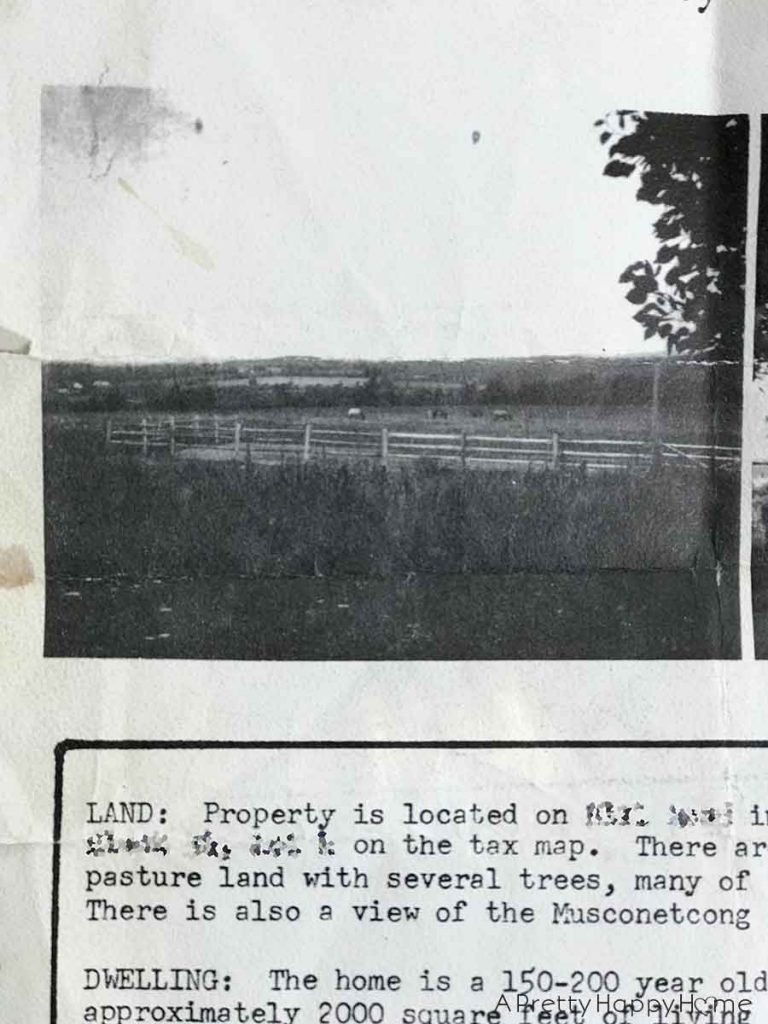
The 1971 MLS Listing For Our Colonial Farmhouse
I rarely answer my phone for numbers I don’t recognize.
Half the time I don’t answer my phone for numbers I DO recognize.
Therefore, it must have been fate calling one sweltering summer night when my phone rang and I decided to answer. After all, every once in awhile I do need to make sure I remember how.
The person who sold us our home was on the other end of the line.
He had found the 1971 MLS Listing for our Colonial Farmhouse in some papers he was sorting through and called to see if I wanted it.
Do I need air to breathe?
Do I need shoes that are cute AND comfortable?
Do I need my children to put their cereal bowls in the dishwasher instead of on the counter next to the dishwasher?
YES!
I definitely want the 1971 MLS Listing for our Colonial Farmhouse. Yes, yes, yes!
And how fast can I get my hands on it?
Frankly, I didn’t know the MLS existed in 1971. I wasn’t alive then.
It didn’t even occur to me to wonder how houses were advertised for sale at any point before we bought our first house in the early 2000s.
Now that I’ve had some time to mull it over, I’m assuming it would involve newspapers, signs and direct mail.
The internet sure has changed things, hasn’t it?
But, man oh man, am I glad he kept that piece of paper and offered it up to me! That was genuinely kind.
For the purposes of sharing this information with the entirety of the internet, I have blurred out some identifying details related to our home’s location. If you want to creep on me, you’re going to have to put some effort into it. But, please don’t. We aren’t that interesting.
This 1971 MLS Listing cleared up some questions about our Colonial Farmhouse and introduced others.
First, other than switching out some outlets, we have not opened up any walls in this house. We are not emotionally prepared for the mess that we definitely will might find!
We were fairly certain that the Colonial Farmhouse’s wiring was not original, but this 1971 MLS Listing confirms that the wiring was updated. That doesn’t mean that the “new” wiring doesn’t need to be updated again (it does), but it is better than having original knob and tube wiring. Knob and tube wiring was pretty common in the U.S. between the 1880s and 1940s and our home is a lot older than that.
Second, we do not own 2.85 acres and the seller did not buy 2.85 acres in 1971. I asked! We think this was a typo or a math mistake because we have a fairly recent plat map with the dimensions of the property and the acreage comes out to just shy of 2 acres.
In the course of this conversation with the seller we did learn that the Colonial Farmhouse was purchased by a couple in the 1960s and at that time the house was sitting on 85 acres. The couple divided the property up and then re-listed the house for sale with just 2 acres of land.
Third, I was curious about property taxes because people in New Jersey like to talk about property taxes more than they do the weather. For real!
Property taxes on the Colonial Farmhouse in 1971 were $875 per year. New Jersey now has the highest property tax rates in the country, so it probably won’t surprise you to learn that the taxes on the Colonial Farmhouse have increased 700% since 1971.
I asked the seller if it was hard to watch that number leap up year after year and he said it was infuriating, but he still lived here for close to 50 years.
This 1971 MLS Listing, which is really just a battered piece of paper with the bottom fifth of the page missing, is such a treasure to me. It’s like a miniature time capsule of our home’s history.
I got to see what our house used to look like with the cedar shake siding and the wood front porch. It was almost like that feeling you get when you look back on baby pictures of your kids. So cute! And didn’t give me any sass!
I also got to see the view out the back of the house before the fir trees were planted. We are so happy with our current backyard view and the privacy it provides, but those trees ARE obscuring the view of the valley. Maybe we need to do a little trimming…
Perhaps what struck me the most after reading this 1971 MLS Listing is that the features of the Colonial Farmhouse that were deemed the most important or marketable to buyers in 1971 were still what was most important to us in 2019. The original beams, the wide plank floors, the two staircases, the view, the outbuildings, and the location. Isn’t that interesting?
Perhaps this is just a case of the right home finding the right buyers over and over, but I’d like to think that this is also a case of the staying power of historical design and classic architectural details.
Don’t get me wrong, I’m a girl who appreciates all the modern conveniences that did not exist in historical homes. Some of them still don’t exist in our Colonial Farmhouse. However, I also place a high degree of value on the quality materials that were used to build colonial era homes and the workmanship that went into each home’s construction. In fact, given that this home was built before electricity and power tools were a thing, I’m downright flabbergasted.
This experience renews my conviction that while the Colonial Farmhouse does need a lot of love and updating, the more permanent design choices we make should strike a balance of reflecting our style, but be as classic and timeless as the features that attracted us to the home in the first place.
P.S. Come to find out, the idea for the first MLS system started back in the late 1800s when real estate agents needed a way to share information about homes they were trying to sell.
Thanks for sharing part of your day with me! Here are some other posts you might enjoy.









2 Comments
Sandy Smith
Thanks for sharing this bit of history of your home. It has been fun seeing your updates on the house. I appreciate that you want to keep it old but yet have a comfortable living home.
annisa
You’re welcome!